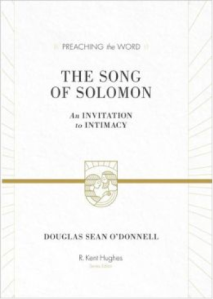Those familiar with this blog recognize that one of my favorite books in the OT is the Song of Songs. I have been back in it recently since I have written a paper on preaching the Song, which is to be presented at the Council of Dispensational Hermeneutics in Houston, TX, October 3-4. At the same time I am finishing the writing of my paper and practicing my copy editing skills, I am contemplating 33 years of marriage to my wife, Joy, on September 8.
At about the same time we celebrate our wedding vows I will have been diagnosed with Trigeminal Neuralgia for two full years. Besides the frequent teeth-shattering jolts of TN pain that I have experienced everyday—sometimes hundreds of times a day for two full years, I have had six surgeries within the past 16 months: four that actually went into the skull to the brain stem and two to fix complications due to the last two craniotomies. Even as I write we are fighting a CSF leak (Cerebral Spinal Fluid), which is a complication of my last two MVD’s! And like the unbelievable intensity of TN pain, it has been an unbelievable two years.
But in the midst of such incredible pain and the fear of more pain is love, a love that was promised 33 years ago—when we were both very young and very healthy and probably very naïve about the future. While there are a number of marriages that break under the strain of serious disease, ours has continued to grow. This is something I do not take for granted since too many marriages run shipwreck on the rocks of chronic illness. A NYT article (Nov 12, 2009) reports that in one study 12 percent of patients divorced during a serious illness. If that study is broken down by gender, the results suggest that if a man is sick 3 percent experience the end of a relationship. If it is the woman who receives the bad news from her doctor, the percentage jumps to 21 percent of guys who either divorce or separate from their spouse. I have no such fears. Not because the statistics are on my side but because Joy promised 33 years ago to love me “in sickness and in health” and she believes and lives out Song 8:7.
“Many waters cannot quench love
Nor will rivers over flow it.”
It is not easy to live with someone in chronic and intense pain. In my case there is nothing Joy can do for me when the unpredictable pain strikes. But Joy never shies away from my pain or me. On the contrary, when she sees (or hears) me in pain, she stops what she is doing, and comes over and enters into the pain. A gentle hand on my shoulder, a squeeze of my hand in hers reminds me that I am not alone. It also reminds me of a love that cannot be quenched by the raging river of pain or will unfortunate circumstances of life overflow it.
While there may be nagging fears that haunt our future, the one fear that does not haunt is Joy’s love—even in the midst of TN.
